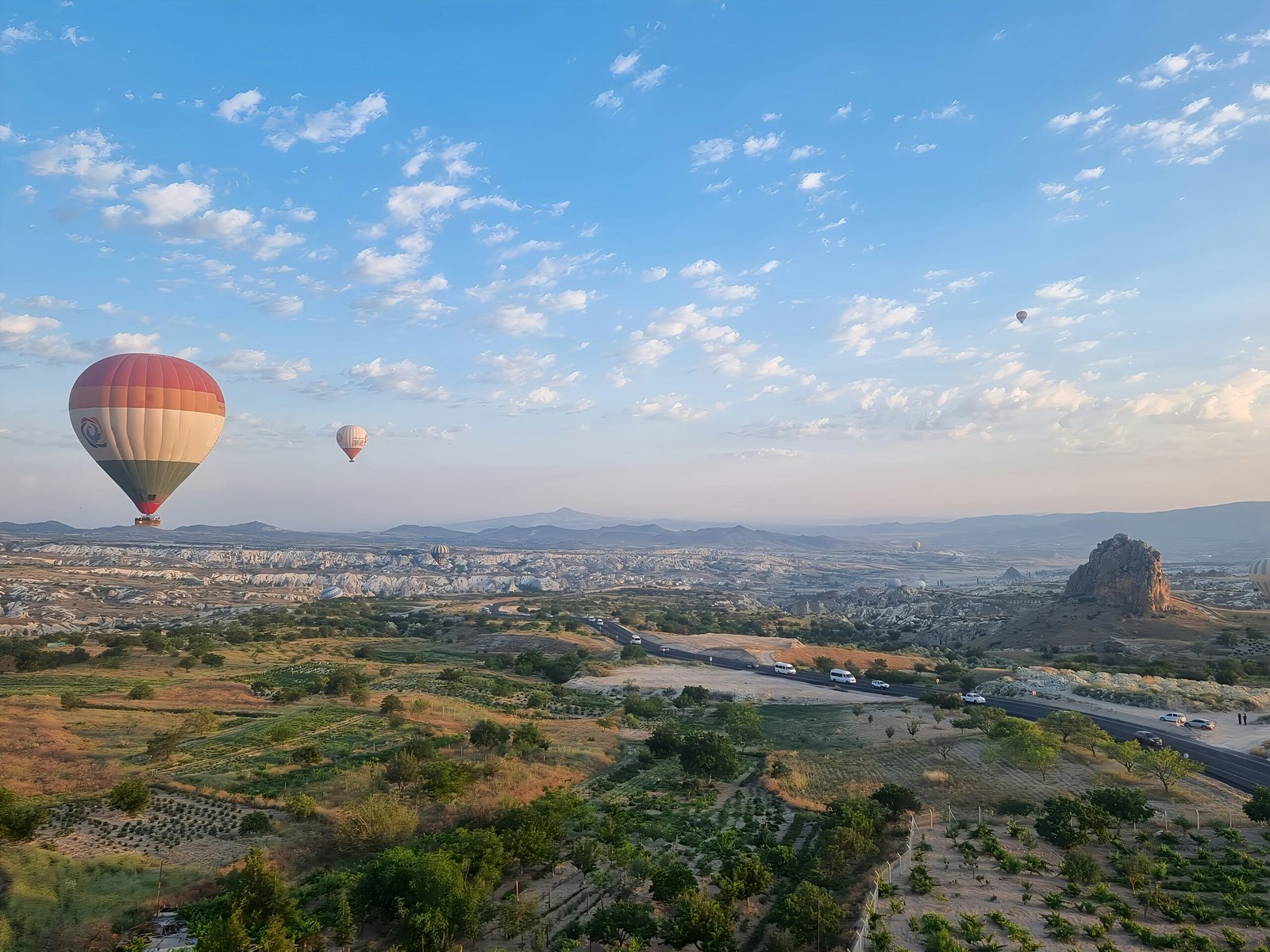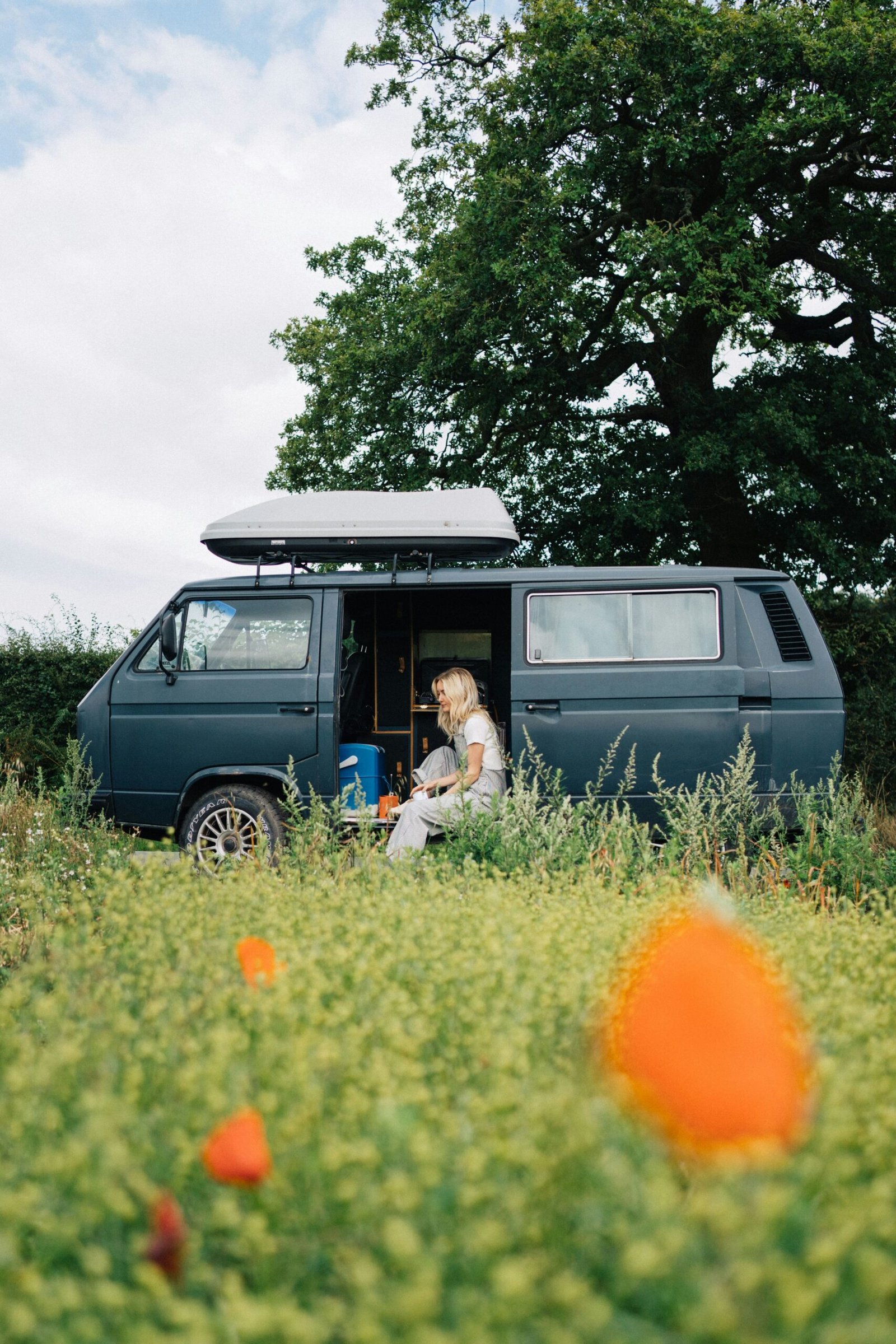

Introduction to Minimalist Traveling
Minimalist traveling, a trend that prioritizes simplicity and efficiency, has gained considerable traction among modern explorers. The concept revolves around the idea of packing only what’s essential for your journey, allowing you to navigate from one destination to another with greater ease and flexibility. This practice isn’t merely about taking fewer items; it encompasses a broader philosophy of decluttering one’s travel experience, reducing unnecessary burdens, and embracing the essence of the journey.
One of the primary benefits of packing light is the ease of movement. When your luggage is compact and manageable, moving through crowded airports, busy train stations, or navigating narrow streets in a foreign city becomes significantly less stressful. This streamlined approach enables you to focus more on enjoying your trip rather than worrying about the logistics of transporting cumbersome suitcases.
Another compelling reason to embrace minimalist traveling is the financial benefit. With stringent baggage policies imposed by many airlines, travelers can incur substantial fees for checked luggage. Opting for a carry-on bag not only saves money but also eliminates the risk of lost or delayed baggage, ensuring your essentials are always within reach.
Reducing stress is yet another advantage of minimalist travel. The act of packing light forces you to prioritize and make mindful choices about what you truly need. This curated selection not only simplifies your packing routine but also unburdens you from the anxiety of managing a plethora of belongings. The end result is a more relaxed and enjoyable travel experience, where the focus shifts from material possessions to meaningful experiences and memories.
Ultimately, minimalist traveling enhances your overall travel experience by fostering a sense of freedom and spontaneity. When you’re not weighed down by excessive baggage, exploring new places becomes a liberating endeavor. You have the flexibility to make impromptu decisions, such as taking a detour to a scenic spot or hopping onto a local bus, without worrying about dragging heavy luggage along.
In essence, the art of packing light embodies a holistic approach to travel that prioritizes necessity, efficiency, and enjoyment. By embracing the principles of minimalist traveling, you can transform your journeys into more enriching and less cumbersome adventures.
Choosing the Right Luggage
One of the fundamental aspects of mastering minimalist travel is selecting the right luggage. The right choice can significantly enhance your travel experience by offering both convenience and efficiency. Given the variety of luggage types available, it is essential to choose one that aligns with your specific needs and travel style. Key options to consider include backpacks, carry-ons, and duffel bags.
Backpacks are ideal for travelers who value mobility and hands-free convenience. They are particularly useful for navigating through crowded areas or when frequently on the move. When selecting a backpack, consider the size, ensuring it meets airline carry-on restrictions while providing enough space for your essentials. Look for lightweight yet durable materials, numerous compartments for organized packing, and ergonomic designs that offer comfortable back support and adjustable straps.
Carry-on luggage is another excellent option for minimalist travelers, especially those on short trips. This type of luggage is designed to fit in the overhead compartment, eliminating the need for checked baggage. Opt for a carry-on with high-quality zippers, ample organizational pockets, and a sturdy structure that can withstand the rigors of travel. Spinner wheels and a retractable handle can further enhance maneuverability, making your journey smoother.
For those who prefer a versatile and flexible option, duffel bags are worth considering. Duffel bags come in various sizes and can easily adapt to different travel needs. They offer spacious interiors and often feature multiple compartments for easy organization. When choosing a duffel bag, prioritize models made of water-resistant materials with reinforced stitching for added durability. Additionally, padded shoulder straps can ensure comfort during extended carrying periods.
Ultimately, the best luggage for minimalist travel combines durability, size, and functionality. Prioritize models that are lightweight yet robust, with plenty of compartments for efficient packing. Ergonomic designs, such as padded and adjustable straps or retractable handles, contribute to a more comfortable travel experience. By carefully selecting your luggage, you lay the foundation for an efficient and enjoyable minimalist travel adventure.
Packing light for travel is both an art and a science, requiring strategic choices in building a versatile and minimalist wardrobe. The primary goal is to select clothing items that maximize space without compromising on style or functionality. One effective strategy is to focus on versatile pieces that can be mixed and matched, creating multiple outfits from a limited number of items. For instance, a pair of neutral-colored pants can be paired with various tops for different looks, making it a core component of your minimalist travel wardrobe.
When choosing clothing, prioritize materials that are lightweight, quick-drying, and wrinkle-resistant. Fabrics such as merino wool, polyester blends, and certain types of cotton can offer these benefits, ensuring comfort and ease of care while on the move. Lightweight fabrics not only save space but also contribute to a more comfortable journey, especially in warmer climates. Quick-drying materials are particularly useful for travelers who need to wash and dry clothes quickly, while wrinkle-resistant fabrics help maintain a neat appearance without the need for ironing.
It’s crucial to plan outfits based on the destination’s climate and activities. Before packing, research the weather conditions to anticipate temperature fluctuations and potential rain or humidity. For warmer destinations, consider packing moisture-wicking and UV-protective clothing to stay cool and protected. In cooler climates, layering is key; pack thermal underlayers, a versatile fleece, and a waterproof outer layer to adapt to changing weather.
Think about the specific activities you will engage in and select appropriate attire. For instance, if hiking is on the agenda, pack sturdy yet lightweight hiking gear that is also versatile enough to be worn in casual settings. For urban explorations, opt for smart-casual items that can transition seamlessly from day tours to evening dinners. By strategically selecting multifunctional pieces that cater to your travel plans, maintaining a minimalist and efficient wardrobe becomes significantly easier.
Maximizing Space with Packing Techniques
Embracing minimalist travel doesn’t simply mean taking less; it’s about packing smartly to make the most of limited space. One effective method is rolling clothes rather than folding them. Rolling not only minimizes wrinkles but also allows for more compact packing, maximizing every inch of your luggage. Additionally, it provides a clearer view of your items, negating the need to unpack and repack multiple times during your trip.
Utilizing packing cubes is another savvy approach. These lightweight fabric containers come in various sizes and help systematically organize your belongings. By categorizing items—such as separating clothes from electronics or toiletries—you can swiftly locate what you need without rummaging through your entire suitcase. Packing cubes also compress your clothes, enabling you to fit more into your carry-on while maintaining structure and order.
Vacuum-sealing bags are particularly beneficial for bulkier items. By removing excess air, these bags significantly reduce the volume of your clothes, allowing you to pack more efficiently within the same space. This technique is especially useful for packing jackets, sweaters, or any other space-consuming clothing. While vacuum-sealing fabrics might result in some creases, it can be a worthwhile trade-off for the additional room.
When it comes to packing, strategy and technique are key. Start with a packing list to ensure you bring only essential items. Lay out all your intended articles and objectively assess their necessity. Aim to pack versatile clothing—items that can be mixed and matched to create multiple outfits. Minimize toiletries by opting for travel-sized versions or investing in solid shampoo and soap bars.
Avoid overpacking by adhering to the one-week rule: pack enough clothes for seven days, regardless of trip length. This approach encourages laundry on the go, reducing overall luggage. Be mindful of your footwear choices; select multi-purpose pairs and wear the bulkiest items during transit to free up space.
By mastering these packing techniques, you can maximize luggage space, enhance travel efficiency, and maintain a minimalist approach, ensuring a lighter, more enjoyable journey.
Minimizing Toiletries and Personal Care Items
When traveling with a minimalist approach, the key to packing toiletries and personal care items lies in discerning between essentials and non-essentials. Begin by identifying the absolute necessities for maintaining hygiene and comfort. These might include items like toothpaste, toothbrush, deodorant, and shampoo. To achieve efficient packing, opt for travel-sized versions of these essentials; they are more convenient for travel and comply with airline restrictions on liquids.
A smart strategy is to utilize solid toiletries where possible. Solid shampoos, conditioners, and even toothpaste tablets take up less space and are not subject to liquid limitations. Additionally, multipurpose products can significantly reduce the number of items you need to bring along. For instance, a soap that doubles as a body wash and shampoo or a moisturizer that can be used for both face and body serve dual purposes, ensuring minimalist packing.
Airline restrictions on liquids mandate that each passenger can carry liquids, gels, and aerosols in containers of 3.4 ounces (100 milliliters) or less, all fitting within a single quart-sized, clear, resealable bag. To stay compliant, invest in a set of TSA-approved refillable travel bottles. These bottles allow you to bring your preferred toiletries without violating regulations. Avoid bringing full-sized products, as they often result in confiscation at security checkpoints.
When choosing between essential and non-essential items, consider the availability of certain products at your destination. Many hotels offer complimentary toiletries, and supermarkets or convenience stores are generally well-stocked with personal care items. By minimizing the number of items you pack, you can customize your kit with local selections if necessary, thereby keeping your luggage light and manageable.
Implementing these strategies not only streamlines your packing but also ensures that you maintain hygiene and comfort while adhering to minimalist principles. Smart selections and versatile products will simplify your travel experience, aligning perfectly with the art of minimalist packing.
Tech and Gadgets: What to Bring and What to Leave Behind
In the modern age of traveling, technology has become an essential aspect of our journeys, offering convenience, connectivity, and entertainment. For minimalist travelers, the challenge lies in striking the right balance between bringing necessary tech gadgets and avoiding excessive weight or clutter.
Foremost among essential tech items is the smartphone. Beyond its primary function of communication, a smartphone serves multiple roles – from being a navigation tool to a camera, and even a portable office. To maximize its use, ensure it has sufficient storage, robust protective casing, and essential travel apps pre-installed.
For those who favor capturing high-quality images without the bulk of a DSLR, a compact digital camera is a viable alternative. These devices offer impressive resolution and advanced features while occupying minimal space. Moreover, many compact cameras come with Wi-Fi capabilities, allowing seamless photo transfer and sharing without extra cables.
If your travel entails work or extensive online activity, a lightweight laptop or a high-performing tablet can be a valuable addition to your travel tech arsenal. Ultrabooks, known for their slender designs and powerful functionalities, are an excellent choice. Tablets, paired with detachable keyboards, offer versatility and ease of use. Opt for models with durable construction to withstand the rigors of travel.
Regarding tech items that might be unnecessary, consider leaving behind e-readers if you prefer to read digitally, as most smartphones and tablets can fulfill this role capably. Similarly, avoid taking multiple charging cables and adapters. Instead, invest in a versatile, multi-port charger and a compact power bank, ensuring you’re prepared for diverse power needs. Packing all gadgets in a dedicated tech organizer can significantly streamline your packing process and safeguard your equipment from damage.
Ultimately, the key to minimalist travel tech lies in choosing multifunctional and compact gadgets that meet your needs while maintaining simplicity and ease of packing. Prioritize essentials and think critically about each item’s utility to maintain a clutter-free and efficient travel experience.
Packing List Essentials
For minimalist travelers, creating an efficient packing list is paramount to maintaining a lightweight, versatile, and stress-free journey. Carefully selecting each item ensures that every piece contributes to the overall travel experience without superfluous weight. Here, we discuss the must-haves for minimalist travel and the rationale behind each choice.
Clothing: A streamlined wardrobe is key. Opt for versatile clothing that can be mixed and matched to create multiple outfits. A suggested list includes:
- Three tops (including one dressy option)
- Two pairs of pants (one casual, one dressy)
- Comfortable shoes (one pair of walking shoes and one pair of dressier shoes)
- Seven pairs of underwear and socks
- A light jacket or sweater
- Essential accessories like a scarf or hat
Choosing neutral colors for your clothing allows for greater mix-and-match potential, reducing the need for extra items.
Toiletries: Minimalist travelers should stick to the basics:
- Travel-sized containers of shampoo and conditioner
- Body wash or soap
- Toothbrush and toothpaste
- Deodorant
- Basic skincare products (moisturizer, sunscreen)
Using solid versions of toiletries like shampoo bars and soap can save space and reduce the risk of spills.
Tech Gadgets: While keeping technology to a minimum, consider the following indispensable items:
- Smartphone (with charger and earbuds)
- Lightweight laptop or tablet for necessary work and entertainment
- A universal adapter for international travels
- Portable power bank
These gadgets ensure that you stay connected and productive without overloading your backpack.
Documents: Essential documentation should always be kept within reach. This includes:
- Passport
- Travel insurance documents
- Printed copies of travel itineraries and important contact information
- Credit cards and a small amount of local currency
Keeping a digital backup of these documents on a secure cloud service provides an added layer of security.
By thoughtfully curating a packing list with these essentials, minimalist travelers can enjoy the advantages of traveling light while ensuring they are equipped for a wide range of situations. Such preparation aids in maintaining the traveler’s focus on the experiences of the journey rather than the burden of excess baggage.
Sustainable and Eco-friendly Packing Tips
Adopting sustainable and eco-friendly packing tips is integral for the conscientious traveler aiming to reduce their environmental impact. One of the simplest yet effective measures is the use of reusable items, which align perfectly with minimalist travel principles. Start by packing a reusable water bottle; not only does it cut down on single-use plastic waste, but it also keeps you hydrated throughout your journey without the need to constantly purchase bottled water.
Similarly, a set of reusable shopping bags is indispensable. These bags can be folded into a small size, making them easy to pack and ideal for trips to local markets or grocery stores. By avoiding single-use plastic bags, you contribute to the reduction of plastic pollution, a critical step towards more sustainable travel.
Another mature move towards eco-friendly packing is incorporating reusable utensils into your kit. Travel-friendly cutlery made from materials like stainless steel or bamboo can significantly reduce the dependency on disposable plastic utensils often provided by street vendors or during take-out meals.
Personal hygiene products are also an area where travelers can make eco-conscious choices. Opt for chemical-free toiletries, which are not only kinder to the environment but are also less likely to cause skin irritation. Solid shampoo bars, for example, eliminate the need for plastic bottles and typically last longer than their liquid counterparts. Additionally, consider toothpaste tablets and deodorant creams in lieu of their traditional packaged forms, thereby further minimizing plastic waste.
Food storage is another aspect where smart choices can contribute to sustainability. Packing reusable food containers, such as those made from silicone or stainless steel, ensures that you can store leftovers without relying on single-use plastics. These containers are durable, easy to clean, and can be used repeatedly, embodying the principles of minimalist, sustainable travel.
By embracing these eco-friendly packing tips, travelers can significantly reduce their environmental footprint while enjoying the myriad benefits of minimalist travel. Simple switches to reusable, sustainable products enable a more conscientious journey, harmonizing with the wider goals of environmental stewardship and resource conservation.




